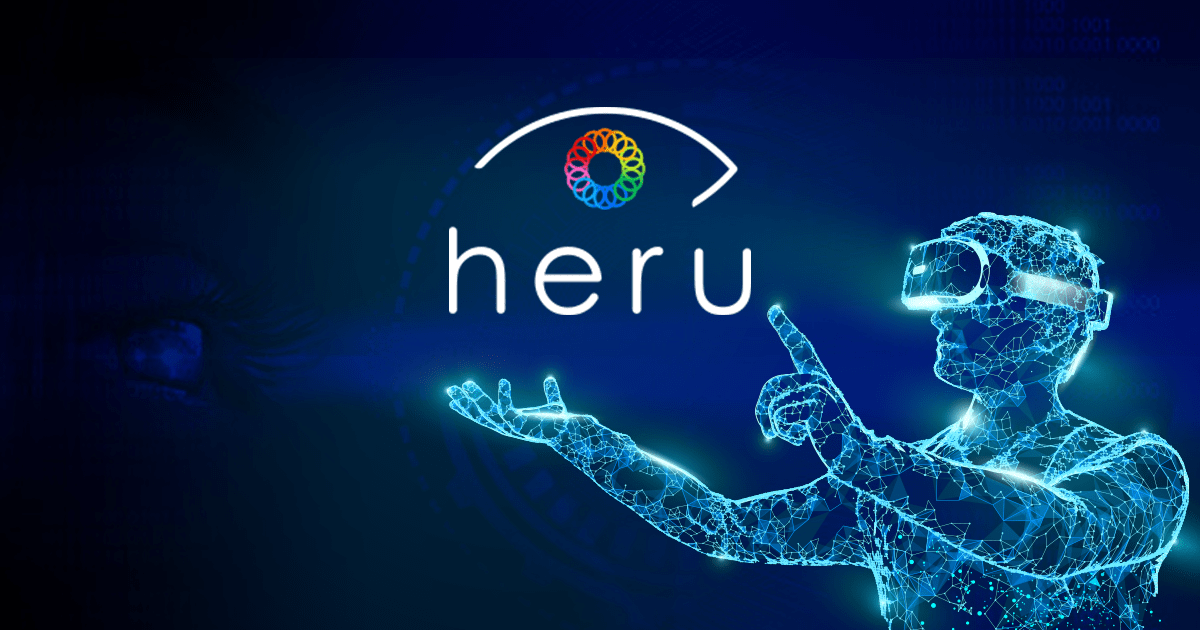Heru Emerges from Stealth Mode to Leverage AI, VR to Test and Treat Visual Field Defects

Heru, an ophthalmology development company creating an artificial intelligence-driven vision diagnostics and augmentation platform, has just emerged from “stealth mode” and made its public debut last month by announcing Food and Drug Administration Class 1 listing status for its first commercially available product, a visual-field test taken with a wearable device.
Heavy Hitters Lead Round
The FDA listing follows Heru’s June disclosure of a $2.7 million seed investment backed by a couple of heavy hitters in medtech. Leaders of the round were Maurice Ferré, MD, CEO, and chairman at InSightec, a developer of therapeutic acoustic platforms in neurology, obstetrics and gynecology, and oncology; and Frederic Moll, MD, founder of Intuitive Surgical – the company that developed the da Vinci robotic surgical platform – and Auris Health – a developer of robotic endoscopy and bronchoscopy platforms that Johnson & Johnson acquired for $3.4 billion in 2019. Dr. Moll is now chief development officer of J&J Medical Devices Companies.
A consortium of investors with experience in developing, launching, and scaling cutting-edge medical technology joined the round. The funding will be used to facilitate Heru’s ongoing clinical trials for FDA clearance of its wearable AI platform and subsequent commercialization efforts.
Moving Vision Tests Outside the Office
Heru’s stated mission is to improve the quality of life for millions of patients suffering from visual defects and disorders through its flagship platform, a cloud-based diagnostic application for visual-field exams. Heru’s software is designed to provide real-time diagnoses and personalized vision correction by leveraging wearable devices – commercially available augmented reality or virtual reality headsets – to perform a subjective visual-field exam.
Heru calls its platform the “only solution” that can autonomously diagnose vision defects and customize individual vision augmentation based on the user’s unique vision defects. Its AI system predicts upcoming points of stimulus in real time, making its visual-field test fast, accurate, and reliable.
Heru says the system has the potential to change how eye care is delivered as both technicians and patients can do tests in any setting, from the clinic to the pharmacy to the home. Physicians will have immediate access to test results from any location via a cloud-based web portal.
“As a cloud-based software technology, Heru’s applications can reach care providers instantly, in all settings,” said Dr. Ferré. “Now more than ever, it is important that we leverage best-in-class technology to help patients diagnose and manage their vision health.”
A feasibility study of 23 glaucoma patients reported that 78% had enhanced awareness of peripheral objects using a prototype of the company’s vision augmentation application.1 Heru’s clinical trial of the augmentation application at Bascom Palmer Eye Institute currently has enrolled more than 500 patients.
The company notes that it is developing additional autonomous testing technologies, as well as other applications in vision diagnostics and augmentation for use with its wearable device. Potential future applications include remote eye exams, diagnosis of double vision, and real-time vision correction. Pairing advancements in AI with commercially available augmented reality or virtual reality headsets may mean eye care practices no longer need large-footprint and high-investment diagnostic machines.
Meeting Critical Unmet Needs
According to Heru, its “convenient, accurate, and validated AI software platform” is “ideally positioned to enable exponential access and scale for critical eye health diagnostics, screening, and visual augmentation for these patients.”
Heru has also taken steps to build out its team. John T. Trefethen, who most recently served as global marketing lead at Topcon Healthcare, has been named chief marketing officer. He has more than 20 years of senior marketing and management experience in ophthalmology technologies. Healthcare technology has changed, Trefethen said, “transitioning away from physical devices to the software that controls them. We must scale to address the growing need for patient care.”
Heru’s Roots
Mohamed Abou Shousha, MD, PhD, now president and CEO of Heru, founded the company along with a team of researchers who have been studying and developing the technology for more than a decade at the University of Miami’s Bascom Palmer Eye Institute. They’ve obtained more than 28 US and international patents to date.
Dr. Shousha, an expert in vision diagnostics and augmentation, is an associate professor of clinical ophthalmology, electrical and computer engineering, and biomedical engineering, and director of the AI and computer augmented vision laboratory at Bascom Palmer. He spun off the company from Bascom Palmer in in 2018.
Heru has developed patented autonomous AI-powered vision diagnostics and augmentation software for the top commercially available augmented- and virtual-reality head-mounted displays (including Magic Leap 1 and Microsoft’s HoloLens 2 headsets). The technology, including patents, patent applications, de-identified clinical data, and software, has been licensed exclusively to Heru by the University of Miami.
Reference
